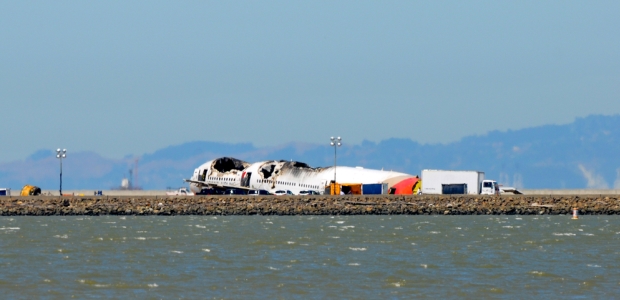
NTSB Highlighting Importance of Procedural Compliance
It is an emerging problem identified from the board's accident investigations of the Asiana crash in San Francisco and the UPS crash in Birmingham, Ala., board member Earl F. Weener reports.
The National Transportation Safety Board last week hosted the Commercial Aviation Safety Team, a group of key government and commercial aviation stakeholders (pilots, operators, and regulators) working to improve commercial aviation safety, and shared with them an NTSB video that highlights "a safety problem we see emerging from our accident investigations: failures of procedural compliance," board member Earl. F. Weener, Ph.D., wrote on the NTSB blog. It is a "Procedural Compliance" video, and that topic is listed on NTSB's Most Wanted List of critical transportation safety improvements.
"During investigations, we too often find that pilots have deviated from or failed to follow procedures related to flying stabilized approaches. Crashes have occurred because pilots did not maintain a sterile cockpit, monitor critical flight parameters, including airspeed, or heed aircraft limitations. Our investigators have discovered missed or incomplete pre-flight briefings and checklists, and callouts," Weener wrote.
Accidents featured in the video include the Asiana Flight 214 crash in San Francisco in July 2013 and the crash of a UPS aircraft in Birmingham, Ala., in August 2013. Key takeaways from the video include these, according to Weener's post:
- SOPs are an important barrier to crew errors caused by fatigue, distraction, stress, or inattention
- SOPs must be trained
- SOPs must be consistently applied and reinforced by both companies and pilots
- The crew concept is an important part of SOPs
Weener added that "everyone plays a role in ensuring procedural compliance—the airline operator, the regulator, and the pilots. They must work together to develop clear, concise and reasonable procedures; make sure train to the procedures; and make sure procedures are followed. By achieving consistent and strong procedural compliance, we can continue our success in making commercial aviation one of the safest forms of transportation."
The safety board determined in June 2014 that the Asiana aircraft crashed on approach to San Francisco International Airport because the flight crew mismanaged the airplane's descent during the visual approach. The aircraft, a Boeing 777-200ER, struck a seawall and crashed on a runway. Three of the 291 passengers were killed and 40 others were seriously hurt, as were eight of the 12 flight attendants and a flight crew member.